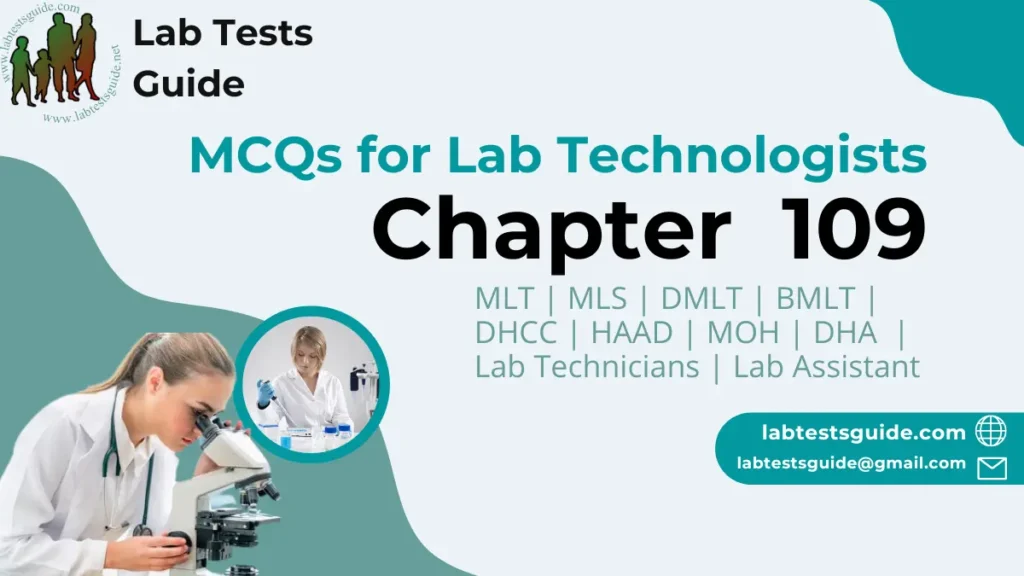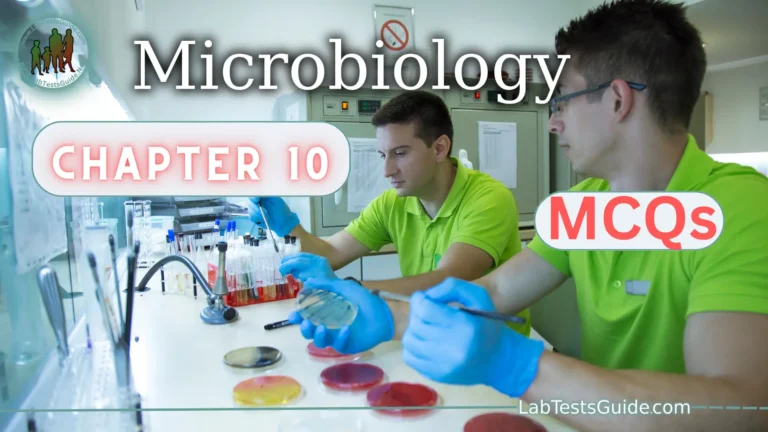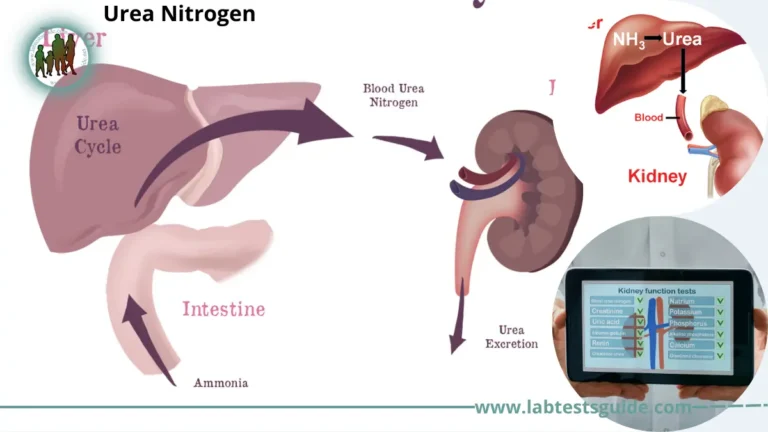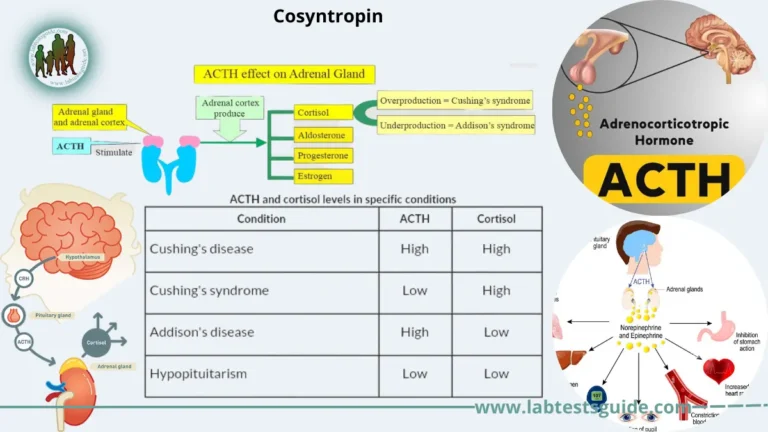5401 to 5450 MCQs for Lab Technician and Technologist Exam Preparation
5000 Plus MCQs for Lab Technician and Technologists are designed to test the knowledge and proficiency of laboratory professionals who work in the field of clinical laboratory science. These questions cover a wide range of topics related to laboratory science, including anatomy, physiology, microbiology, chemistry, and hematology.

If You like then share this to your friends and other social media.
If You have any question and suggestions then please Contact us Here
Questions 5401 to 5450
- Which one of the following is an essential amino acid?
- Arginine
- Tyrosine
- Phenylalanine✔
- Proline
- One of the following amino acid is solely ketogenic:
- Lysine✔
- Alanine
- Valine
- Glutamate
- Along with CO2, NH3 and ATP, the amino acid that is needed in urea cycle is
- Alanine
- Isoleucine
- Aspartate✔
- Glycine
- Isoelectric pH of an amino acid is that pH at which it has a
- Positive charge
- Negative charge
- No charge✔
- None of these
- Which of the following contributes nitrogen atoms to both purine and pyrimidine rings?
- Aspartate✔
- Carbamoyl phosphate
- CO2
- Glutamine
- Which amino acid is a lipotropic factor?
- Lysine
- Lecuine
- Tryptophan
- Methionine✔
- Which of the following protein is rich in cysteine?
- Elastine
- Collagen
- Fibrin
- Keratin✔
- Which amino acid is present at 6th position of β-chain of Hbs instead of glutamate in HbA?
- Cysteine
- Valine✔
- Aspartate
- Glutamate
- The amino acid which contains an indole group is
- Histidine
- Arginine
- Cystine
- Tryptophan✔
- From two amino acids peptide bond formation involves removal of one molecule of
- Water✔
- Ammonia
- Carbondioxide
- Carboxylic acid
- Polymers of more than 100 amino acids are termed
- Proteins✔
- Polypeptides
- Both (Proteins) and (Polypeptides)
- None of these
- The example of scleroproteins:
- Glutamin
- Giladin
- Salmine
- Elastin✔
- The example of phosphoprotein:
- Mucin
- Ovovitellin✔
- Ovomucoid
- Tendomucoid
- The example of metalloproteins:
- Siderophilin✔
- OREES mucoid
- Elastin
- All of these
- The example of chromoprotein:
- Salmine
- Catalase✔
- Zein
- Gliadin
- Deamination is __ of amino group.
- Removal✔
- Addition
- Supplementation
- None of these
- Proteins produce polypeptides from proteins by
- Oxidizing
- Reducing
- Hydrolyzing✔
- None of these
- Proteins react with biuret reagent which is suggestive of 2 or more
- Hydrogen bonds
- Peptide bonds✔
- Disulphide bonds
- Hydrophobic bonds
- The disulphide bond is not broken under the usual conditions of
- Filtration✔
- Reduction
- Oxidation
- Denaturation
- Insulin is oxidized to separate the protein molecule into its constituent polypeptide chains without affecting the other part of the molecule by the use of
- Performic acid✔
- Oxalic acid
- Citric acid
- Malic acid
- Each hydrogen bond is quite
- Weak✔
- Strong
- Both (Weak ) and (Strong)
- None of these
- A coiled structure in which peptide bonds are folded in regular manner by
- Globular proteins
- Fibrous proteins
- Both (Globular proteins ) and (Fibrous proteins)✔
- None of these
- In many proteins the hydrogen bonding produces a regular coiled arrangement called
- α-helix✔
- β-helix
- Both (α-helix) and (β-helix)
- None of these
- Many globular proteins are stable in solution although they lack in
- Hydrogen bonds
- Salt bonds
- Non-polar bonds
- Disulphide bonds✔
- Each turn of α-helix contains the number of amino acids
- 2.8
- 3.2
- 3.4
- 3.6✔
- The distance travelled per turn of α-helix in nm is
- 0.34
- 0.44
- 0.54✔
- 0.64
- α-helix is disrupted by certain amino acids like
- Proline✔
- Arginine
- Histidine
- Lysine
- α-helix is stabilized by
- Hydrogen bonds✔
- Disulphide bonds
- Salt bonds
- Non-polar bonds
- Foetal haemoglobin contains
- Two α and two γ chains✔
- Two β and two γ chains
- Both (Two α and two γ chains) and (Two β and two γ chains)
- None of these
- When haemoglobin takes up oxygen there is a change in the structure due to the moving closer together of
- β-chains✔
- α-chains
- γ-chains
- α and γ chains
- The hydrogen bonds in the secondary and tertiary structure of proteins are directly attacked by
- Salts
- Alkalies✔
- Detergents
- All of these
- The hydrogen bonds between peptide linkages are interfered by
- Guanidine✔
- Uric acid
- Salicylic acid
- Oxalic acid
- The digestability of certain denatured proteins by proteolytic enzymes
- Decreases
- Increases✔
- Normal
- None of these
- The antigenic antibody functions of proteins by denaturation are frequently
- Not changed
- Changed✔
- Both (Not changed ) and (Changed)
- None of these
- In case of severe denaturation of protein, there is
- Reversible denaturation
- Moderate reversible denaturation
- Irreversible denaturation✔
- None of these
- When egg albumin is heated till it is coagulated, the secondary and tertiary structures of the proteins are completely lost resulting in a mixture of randomly arranged
- Dipeptide chains
- Tripeptide chains
- Polypeptide chains✔
- All of these
- In glycoproteins the carbohydrate is in the form of disaccharide units, the number of units are
- 50–100
- 200–300✔
- 400–500
- 600–700
- The milk protein in the stomach of the infants is digested by
- Pepsin
- Trypsin
- Chymotrypsin
- Rennin✔
- Achylia gastrica is said to be when absence of
- Pepsin only
- Both pepsin and HCl✔
- HCl only
- All of these
- The pH of gastric juice become low in
- Hemolytic anemia
- Pernicious anemia✔
- Both (Hemolytic anemia ) and (Pernicious anemia)
- None of these
- In small intestine trypsin hydrolyzes peptide linkages containing
- Arginine✔
- Histidine
- Serine
- Aspartate
- Chymotrypsin in the small intestine hydrolyzes peptide linkages containing
- Alanine
- Pheynl alanine✔
- Valine
- Methionine
- Carboxy peptidase B in the small intestine hydrolyzes peptides containing
- Leucine
- Isoleucine
- Arginine✔
- Cysteine
- The third active process for amino acids transport involves
- Acidic amino acids
- Basic amino acids
- Neutral amino acids✔
- Sulphur containing amino acids
- The neutral amino acids for absorption need
- TPP
- B6 – PO4✔
- NAD+
- NADP+
- If one amino acid is fed excess, the absorption of another is
- Slightly accelerated
- Moderately accelerated
- Highly accelerated
- Retarded✔
- Under normal conditions, food proteins are generally readily digested upto the present
- 67 to 73
- 74 to 81
- 82 to 89
- 90 to 97✔
- By overheating the nutritional value of cereal proteins is
- Increased
- Decreased✔
- Unchanged
- None of these
- More than half of the protein of the liver and intestinal mucosa are broken down and resynthesised in
- 10 days✔
- 12 days
- 15 days
- 18 days
- Protein anabolism is stimulated by
- ACTH
- Testosterone✔
- Glucagon
- Epinephrine
The questions are typically designed to assess the technical skills and knowledge required for the laboratory profession, including the ability to analyze laboratory test results, perform laboratory procedures, and maintain laboratory equipment.
To prepare for these MCQs, candidates should have a thorough understanding of the key concepts and principles of laboratory science. They should also be familiar with common laboratory equipment and procedures, as well as laboratory safety protocols.
Candidates may also benefit from studying specific laboratory science textbooks or taking online courses that cover the material tested in the MCQs. Additionally, practicing sample MCQs and reviewing the answers can help candidates identify areas where they may need to improve their knowledge or skills.
Overall, the MCQs for lab technologists are designed to be challenging and comprehensive, requiring candidates to demonstrate a high level of proficiency in the field of laboratory science.
Possible References Used






